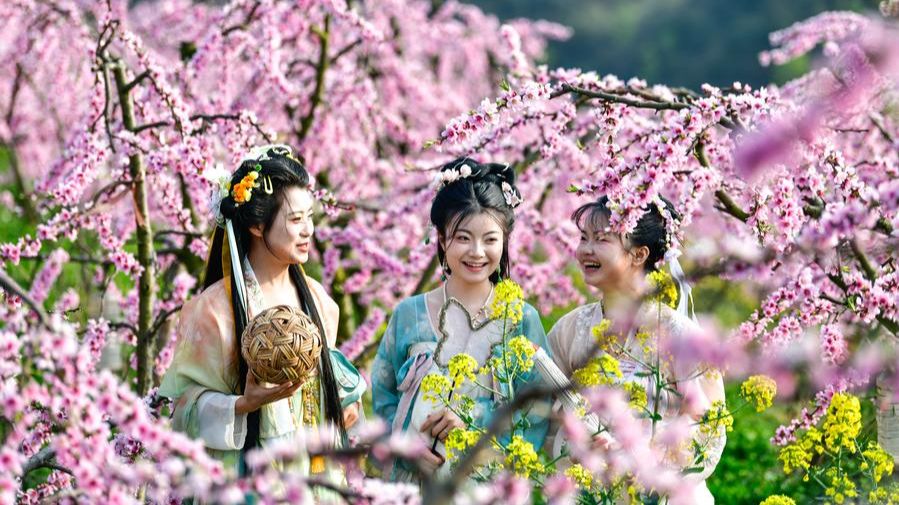
BEIJING - As China prepares for an eight-day holiday at the beginning of October, its tourism market is bracing for another surge. At the same time, a new proposal to introduce spring and autumn vacations for primary and middle school students is gaining attention and could reshape how families plan their travels.
Earlier this month, a national policy document on expanding service consumption called for "optimizing student vacation arrangements" to stimulate new growth. Among these measures was encouraging local governments to add short breaks in spring and autumn -- without reducing annual teaching hours, thereby creating more time for tourism and leisure spending.
The document followed a March action plan to boost consumption, which proposed giving localities the flexibility to pilot spring or autumn breaks for students.
READ MORE: Study tours should offer more 'learning' experience
Several regions have already experimented with the idea, typically adding two- or three-day breaks that coincide with public holidays to form longer stretches of rest for family trips, leisure and educational activities.
Hangzhou, capital of East China's Zhejiang province, has offered spring and autumn vacations since 2004. In Hubei province in Central China, the city of Enshi introduced spring breaks for compulsory education students in 2014 -- later expanding the spring and autumn break system to all schools in the prefecture administering the city.
In August 2025, Foshan in South China's Guangdong province announced that during the 2025-26 school year, its compulsory education students will enjoy a three-day autumn holiday in November and a two-day spring break linked to the May Day holiday in 2026.
"If parents align their paid leave with spring and autumn breaks, they are more likely to travel -- boosting service consumption," noted Peng Peng, a social science researcher from Guangdong.
Currently, most family travel in China is concentrated in summer and winter -- straining transportation, hotels and scenic sites. According to aviation data provider Flight Manager, air passenger traffic in July and August reached a record 150 million, while travel agency UTour reported that family trips had accounted for more than 60 percent of summer bookings.
Liu Deyan, associate professor at Shanghai Normal University's College of Tourism, said additional breaks could help rebalance the market. "Peak seasons are overcrowded, off-seasons too quiet," Liu noted. "For students, traveling in summer or winter means higher costs and packed destinations."
Parents are divided. Li Tingting, who lives in North China's Tianjin municipality, said she looks forward to more flexible family travel options, while a mother from Zhoushan in East China, surnamed Liu, voiced concern: "For dual-income families, an extra short break may mean more childcare challenges. It's not always convenient."
Education experts acknowledge challenges. "The main obstacles are tight academic schedules and the added coordination required from schools and parents," said Chu Zhaohui, a researcher at the China National Academy of Educational Sciences.
In the September policy document, schools are urged to adapt spring and autumn breaks to local conditions -- factoring in climate, economic development schedules and paid leave policies.
Some trial cities are offering solutions. In April, Hangzhou schools launched childcare services during spring break, while in the city of Lichuan in Hubei, schools aligned the break with the Qingming Festival this year, and worked with community groups to organize cultural and volunteer activities, keeping students engaged when parents were unavailable.
READ MORE: Summer travel reaches new highs in China
Supporters stress that benefits extend beyond tourism. Social science researcher Peng believes the breaks make the school holiday schedule more balanced, helping to ease academic pressure, promote students' physical and mental well-being, and strengthen their overall health.
In Lichuan, students returned from spring break with artwork and cultural projects inspired by their time off.
"We need better holiday arrangements to help children experience seasonal culture and nature. It is also an important part of their education," said Long Liangfu, a professor at the Zhongshan Institute of the University of Electronic Science and Technology of China.


